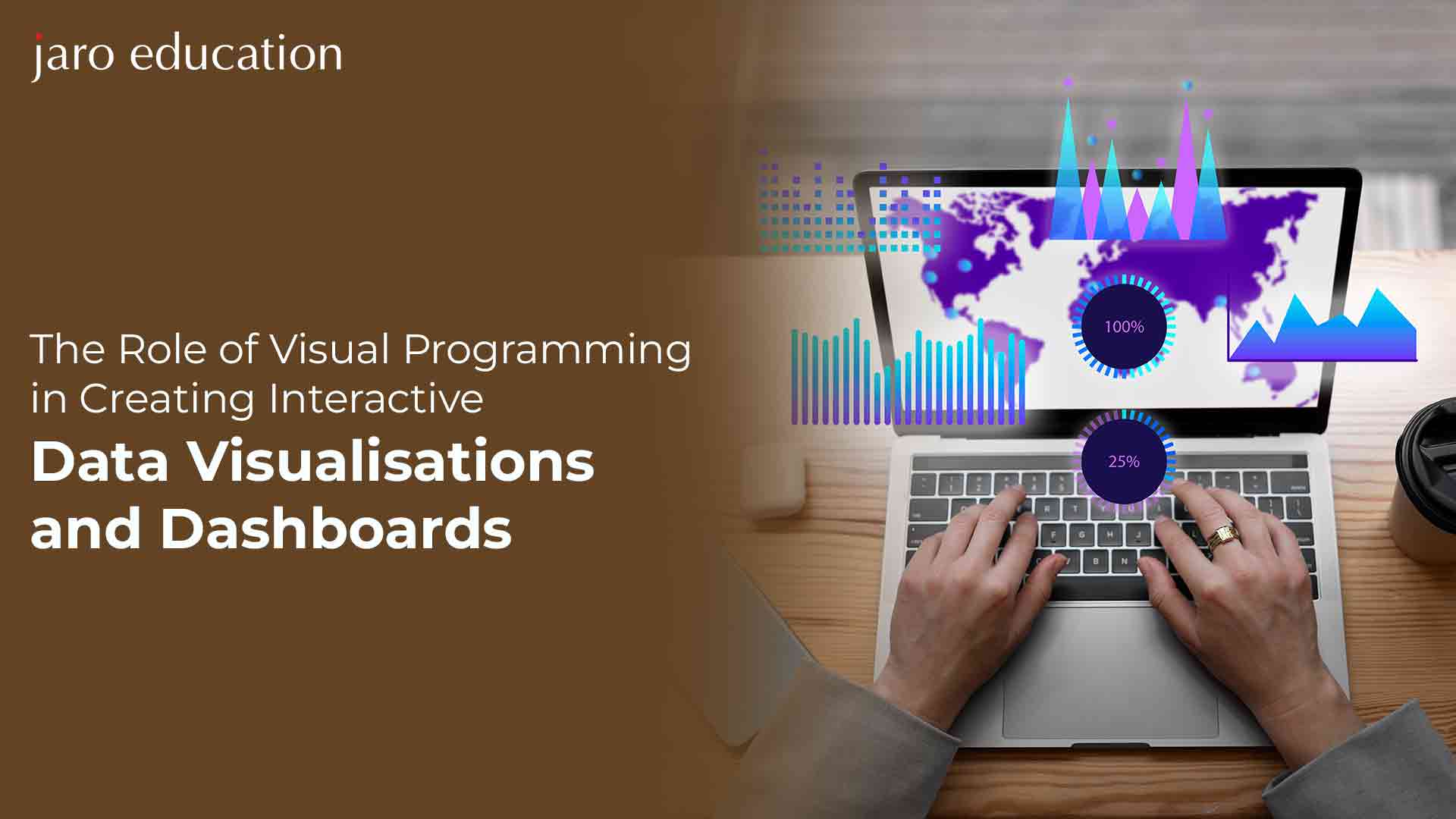Data visualisation has emerged as a critical component of comprehending complicated data sets in today’s data-driven environment. Because they offer timely insights and let users explore data in various ways, interactive data visualisations and dashboards are becoming extremely common.
The development of these tools has been significantly influenced by visual programming, which makes it simpler to produce unique visualisations and designs. It uses graphical elements like diagrams and flowcharts to construct code.
Professionals and students who want to accelerate their careers in visual programming can register for the online BCA programme at Manipal University Jaipur. Learners will gain exposure to a programming and data visualisation foundation, enabling them to pursue professions in multiple industries, such as web development, business intelligence, and data analysis.
Interactive Data Visualisation and Dashboards: An Overview
Interactive data visualisation software is a contemporary method of data analysis that lets users directly alter and examine graphical representations of data. Data analysts can better understand data by using visual aids in data visualisation.
By including features that let users change the visualisation parameters, interactive data visualisation software goes one step further, enabling users to disclose more detail and produce fresh insights. Analysts may ask more engaging questions and get the most out of the data by including interactivity tools.
Importance of Visual Programming in Creating Interactive Data Visualisation and Dashboards
Data visualisation uses visual programming to present information visually, making it simpler to comprehend and recall. It aids companies in determining what influences consumer behaviour, locating problem areas, forecasting sales volumes, and more.
Data visualisation has several advantages, including making it simpler to swiftly assimilate information, increasing insights, hastening decision-making, and retaining audience attention. It promotes quicker action and success with fewer mistakes, eliminates the need for data scientists, and helps everyone engage and share insights.
A Guide to Creating Interactive Data Visualisations Using Visual Programming
To produce a top-notch interactive data visualisation, there are four essential processes.
Integration of data
Perform data replication, ingestion, and transformation to take raw data and transform it into clean, analytics-ready information. After that, keep it in a data lake or warehouse.
Goal clarification
Before diving into creating interactive data visualisations, it’s essential to clarify your goals. This step involves understanding what you aim to achieve with your data visualisation and how it will benefit your users.
Design for visualisation
The first step in design is choosing the KPIs and types of graphs, charts, and maps that best convey your message. Users can easily comprehend and interact with the data if your visualisations are clear and straightforward.
Sharing and cooperation
Permit all authorised users to freely explore the data to find their own insights. Users should be able to interact with your visualisations on their mobile devices and integrate them into other programmes using your software.
Techniques for Interactive Data Visualisation
The following are a few typical data visualisation techniques that can aid consumers in exploring your data visualisations:
Brushing
By using the mouse to alter a plot’s colour, brushing is a method of interacting with data. You may outline objects or points using the brush. The modifications may be retained even after the brush is withdrawn or may only be seen when the brush is in use. When there are several interconnected plots, brushing is frequently used.
Scaling
In data visualisation, scaling is a helpful tool that enables you to alter the aspect ratio of a plot to view various data aspects. In order to see the data more clearly, it is frequently used to zoom in on dense areas of a scatter plot.
Identification
Identification, also called label brushing or mouseover, is the process by which a label spontaneously appears when your cursor is over a certain area of a plot.
Painting
Painting is a method that modifies a plot with persistent brushing and then uses other processes, such as touring, to compare various groupings of the data.
Linking
Linking is a strategy that joins particular story points together. A point in one plot matches perfectly with a point in the other in a process known as one-to-one linkage. Categorical variables can also be used as elements, with all data values for that category being highlighted in all discernible charts. When an area in one plot is brushed, all cases in the corresponding category in the opposite plot are also brushed.
The Takeaway
A potent tool for developing dynamic data visualisations and dashboards is visual programming. It offers a high degree of design flexibility and enables even non-technical users to build unique visualisations.
In industries ranging from business and finance to healthcare and science, interactive data visualisations have the potential to revolutionise how we comprehend and convey complex data stories.
The online BCA course – Manipal University Jaipur offers the best environment for learning about visual programming in-depth. The course highlights multiple programming languages and tools for data visualisation. The creation of interactive data visualisations can be practised by students through interactive coursework, real-world case studies, and projects that are pertinent to their sector.
Enroll right away with Jaro Education in Manipal University Jaipur’s Bachelor of Computer Application (BCA), an online degree programme to receive thorough training in visual programming and other crucial skills needed for a prosperous career in computer applications.






